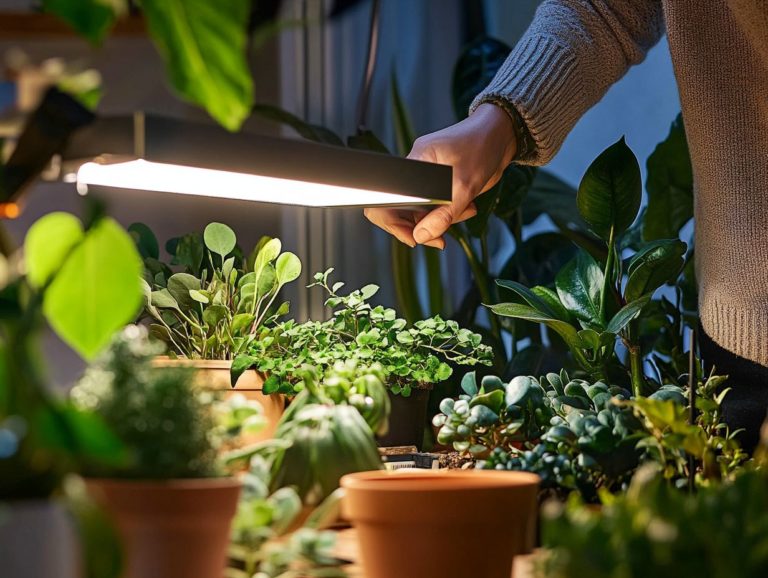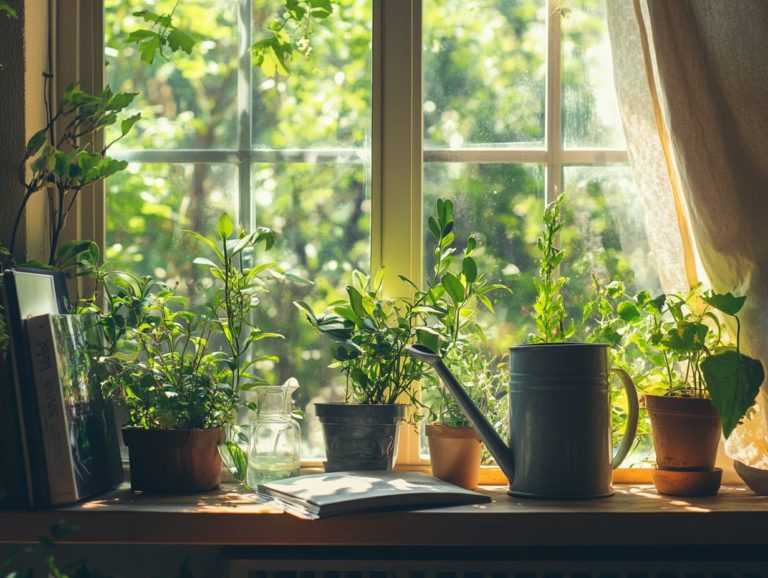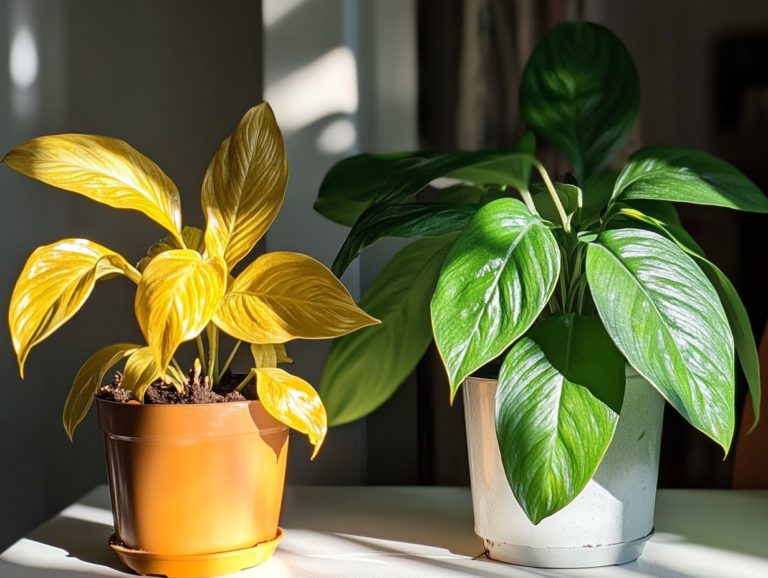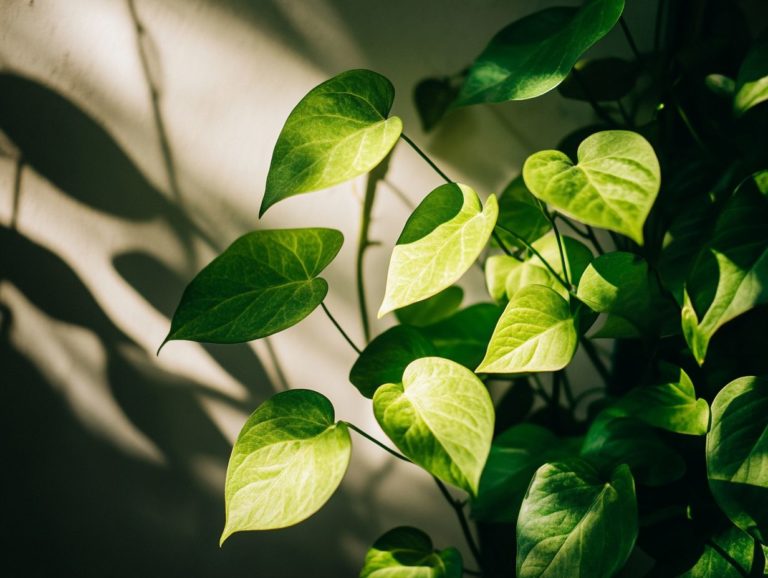Balancing Light and Water for Your Plants
Water and light are crucial for the growth and health of your plants.
Learning how to provide these essentials can elevate your gardening experience.
This article explores the roles of water and light. You’ll find practical tips for efficient watering and selecting the best lighting.
You’ll discover common pitfalls to avoid and how to troubleshoot issues, ensuring your plants flourish.
Dive in to uncover the secrets to cultivating healthy plants!
Contents
- Key Takeaways:
- The Importance of Water and Light for Plants
- How to Properly Water Your Plants
- Choosing the Right Lighting for Your Plants
- Finding the Right Balance
- Common Mistakes to Avoid
- Troubleshooting for Plant Health
- Frequently Asked Questions
- What is the importance of balancing light and water for my plants?
- How much light do my plants need?
- What are some signs that my plants are not getting enough light?
- How often should I water my plants?
- What are some signs that my plants are not getting enough water?
- Can I use artificial light for my plants?
Key Takeaways:
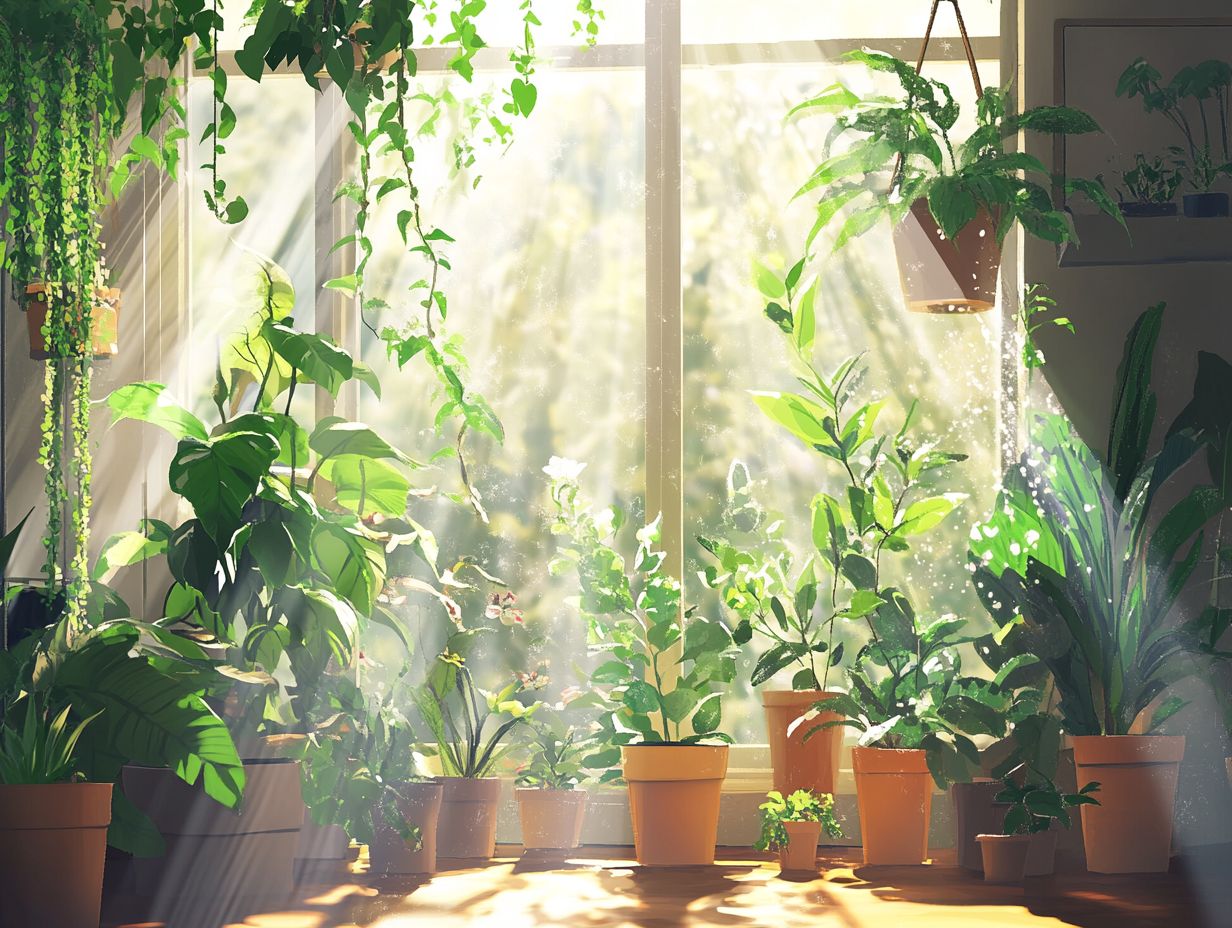
- Proper watering and adequate light are key to healthy plant growth.
- Regularly check soil moisture and adjust watering to prevent under or over-watering.
- Consider the type of light your plants need for optimal growth.
The Importance of Water and Light for Plants
Water and light are important in plant care. They play a vital role in photosynthesis and transpiration, which are essential for plant health.
Every type of plant, from succulents to tropical plants, has unique sunlight needs. Customizing your care routines is crucial for their well-being.
Understanding the Role of Water and Light in Plant Growth
Water and light are essential for plant growth. They enable processes like photosynthesis and transpiration, which support nutrient uptake and oxygen release.
Photosynthesis allows plants to use sunlight to convert carbon dioxide and water into glucose and oxygen. This process fuels their growth and provides oxygen for us all.
Transpiration is how water moves through the plant and evaporates from leaves. It helps cool the plant and transports nutrients.
These processes keep plants healthy and strong. Understanding their interactions will transform your approach to gardening!
How to Properly Water Your Plants
Proper watering is vital for keeping your plants well-hydrated. Incorrect techniques can lead to root rot or inadequate moisture levels.
Tips for Watering Frequency and Amount
Finding the right watering frequency is important for maintaining moisture levels. The finger method is a simple way to check if your plants need water.
Different plants have different needs. Succulents may only need water every few weeks, while tropical plants often need more frequent watering.
To use the finger method, insert your finger about an inch into the soil. If it feels dry, it s time to water. For aquatic plants, monitor the water level and quality to keep a healthy environment.
Choosing the Right Lighting for Your Plants
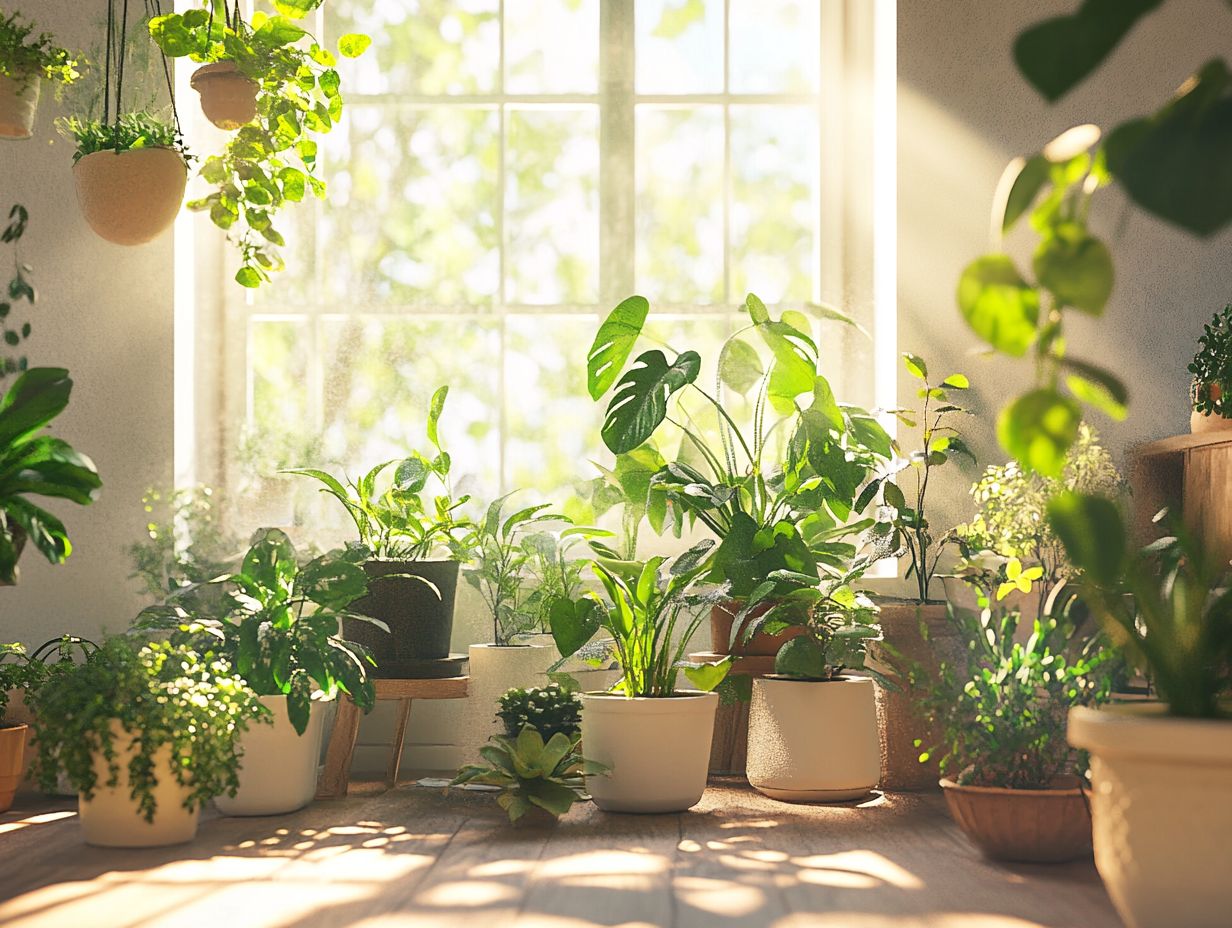
Selecting the ideal lighting for your plants requires a keen understanding of several key factors, including light intensity, quality, and duration. Each of these elements plays a crucial role in shaping the growth and vitality of your plants, ensuring they thrive in their environment.
Types of Light and Their Effects on Plants
Different types of light, from the warm embrace of sunlight to the precision of artificial grow lights, uniquely influence plant health and their capacity to adapt and flourish in various environments.
Understanding how each type of light affects growth is essential for your optimal plant care. Natural sunlight delivers the complete spectrum necessary for photosynthesis. Specific artificial grow lights can replicate these conditions to support different stages of a plant’s life cycle. Indoor and outdoor plants respond differently to these variations; indoor plants often require customized care to ensure they get enough light exposure.
Light adaptation is key, as plants can adjust to shifting light conditions. However, you must recognize their specific needs to maintain vibrant health.
Factors like light intensity and duration affect growth and play a significant role in flowering and fruiting. Stay informed about these dynamics to keep your plants thriving!
Finding the Right Balance
Finding the perfect balance between light and water requirements is crucial for achieving optimal plant growth. Keep in mind that environmental factors and soil composition significantly shape these needs.
By carefully considering these elements, you can create an ideal environment for your plants to thrive.
Factors to Consider for Optimal Plant Growth
Several environmental factors must be considered for optimal plant growth, including:
- Soil drainage
- Light adaptation
- Specific needs of different plant types
Understanding how each of these elements influences plant health is crucial. For example, too much water in the soil can cause root rot, depriving the plant of essential oxygen. Conversely, inadequate drainage can suffocate the roots and impair nutrient uptake.
Light adaptation varies widely among plant species. Some thrive in direct sunlight, while others flourish in the shade. You must align your care routines with these specific requirements to enhance growth potential and overall vitality.
By tailoring your watering schedules, fertilization regimens, and positioning in light or shade, you can significantly impact a plant s health and blooming capabilities.
Common Mistakes to Avoid
Avoiding common mistakes in plant care is essential for maintaining optimal plant health and fostering vibrant growth. Here are some mistakes to watch out for:
- Over-watering
- Under-watering
- Poor lighting
By mastering this balance, you cultivate not only thriving plants but also a flourishing environment that reflects your dedication to their well-being.
Issues with Over-Watering and Under-Watering and Lighting
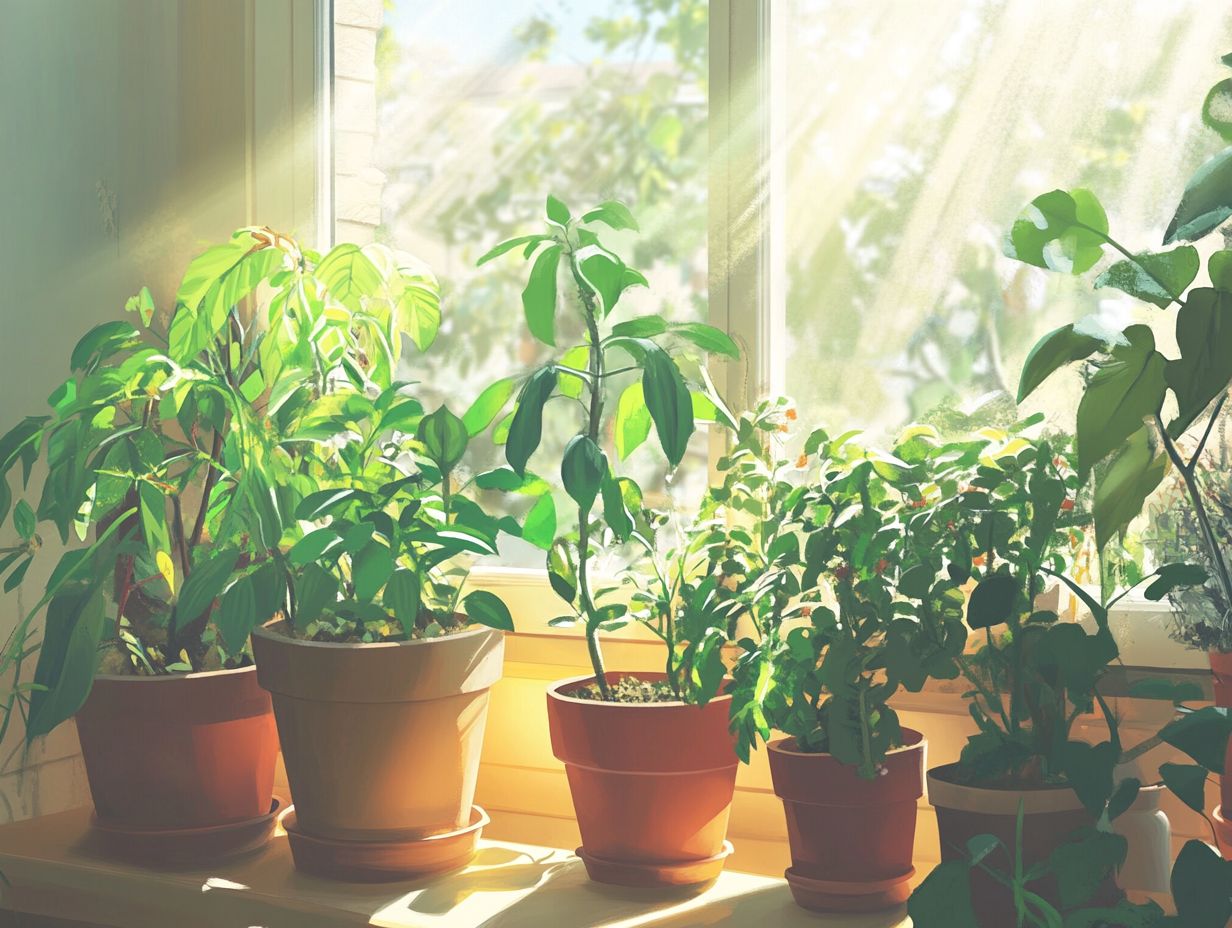
Over-watering and under-watering can cause serious problems like root rot and leaf wilting. You must monitor moisture levels closely and adjust your lighting accordingly.
Healing these conditions starts with understanding your plants’ specific needs. For example, over-watering may manifest as yellowing leaves and a soggy root system. Under-watering can lead to browning edges and drooping foliage.
To tackle these symptoms, check the soil’s dryness before reaching for the watering can and use well-draining pots. If your plants exhibit leggy growth or discolored leaves, it s a clear sign they might be craving brighter, indirect light.
Adjusting their positioning or incorporating grow lights can significantly enhance their well-being, fostering lush growth and vibrant colors that will bring your space to life.
Troubleshooting for Plant Health
Troubleshooting plant health requires you to identify common issues and understand the environmental factors that contribute to these problems. By doing so, you can ensure that your plants receive the right care and maintenance they need to thrive.
Identifying and Addressing Plant Issues
Identifying and addressing plant issues like leaf wilting and root rot is essential for maintaining healthy plants and avoiding common care mistakes.
When you notice signs of distress, such as yellowing leaves or slow growth, act fast to diagnose the problem. Common culprits include overwatering, which can lead to root rot, and insufficient light, resulting in leggy growth and weak foliage.
To effectively tackle these issues, make it a habit to check the soil moisture levels regularly and ensure proper drainage.
Creating a balanced watering schedule and providing adequate light can significantly enhance your plant’s health. By diagnosing issues early and taking a proactive approach, you can prevent minor setbacks from turning into major headaches, cultivating an environment where your plants can truly thrive.
Frequently Asked Questions
What is the importance of balancing light and water for my plants?
Balancing light and water is crucial for plant growth, as both factors play a significant role in the process plants use to turn light into energy. Too much or too little of either can lead to slow growth or even death of the plant.
How much light do my plants need?
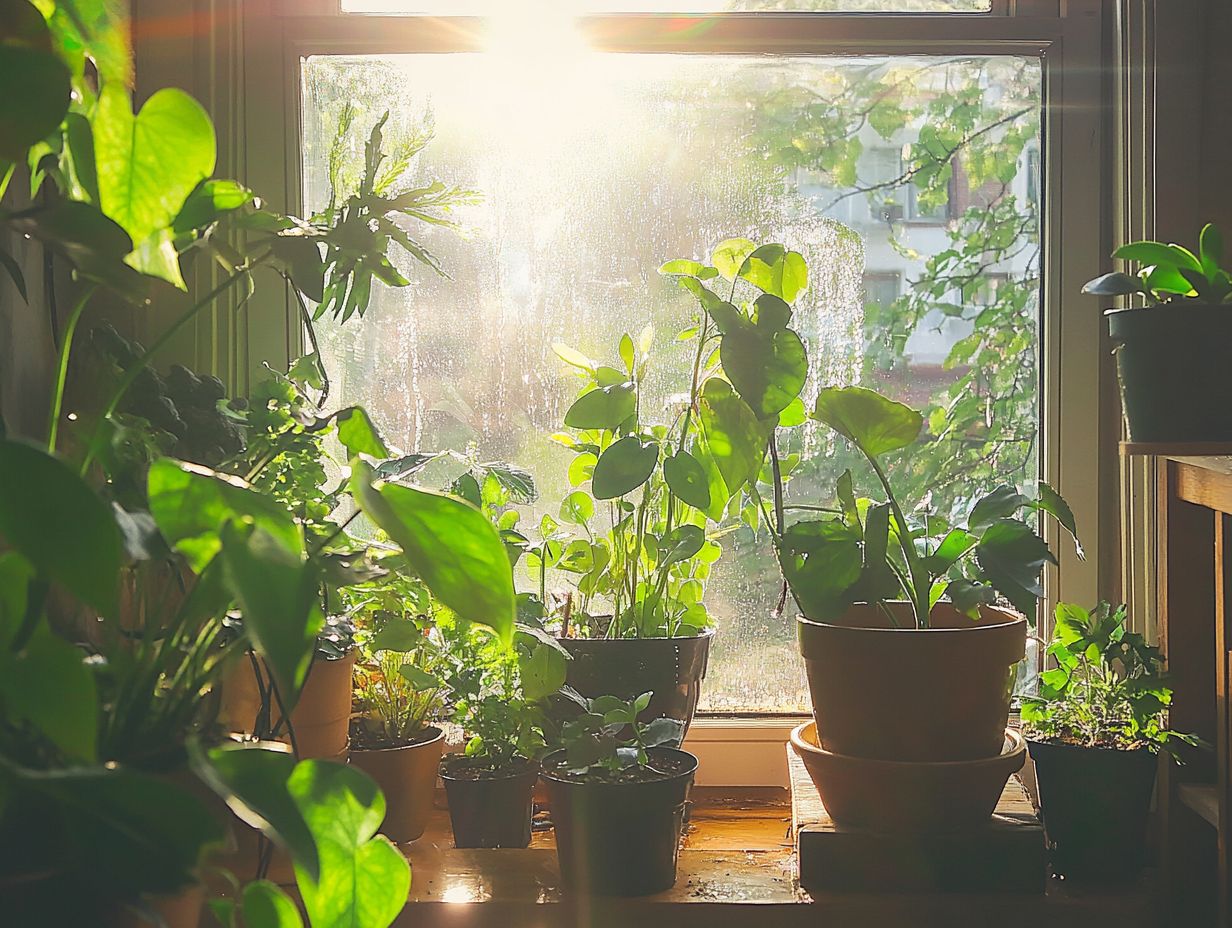
The amount of light needed for plants varies depending on the type of plant. Most plants require at least 6-8 hours of sunlight per day, while others, such as succulents, can thrive in indirect or filtered light. Researching the specific light requirements of your plants is essential to ensure they are getting enough or not too much light.
What are some signs that my plants are not getting enough light?
If your plants are not getting enough light, they may exhibit signs such as yellowing or wilting leaves, slow growth, and leaning towards a light source. Plants lacking adequate light may also produce fewer flowers or fruits.
How often should I water my plants?
The frequency of watering your plants depends on several factors, including the type of plant, the size of the plant, and the climate. In general, water your plants when the top inch of soil feels dry. Overwatering can lead to root rot and other issues, so finding a balance is key.
What are some signs that my plants are not getting enough water?
Plants that are not getting enough water may have dry, crispy leaves and may wilt or droop. The soil may also be dry and pulling away from the edges of the pot. Check the moisture level of the soil regularly to keep your plants happy!
Can I use artificial light for my plants?
Yes, artificial light can be used as a supplement to natural light for your plants. LED grow lights are a popular option as they mimic the full spectrum of sunlight and can be easily adjusted for different plant needs. However, natural light is still the best source of light for plant growth.

